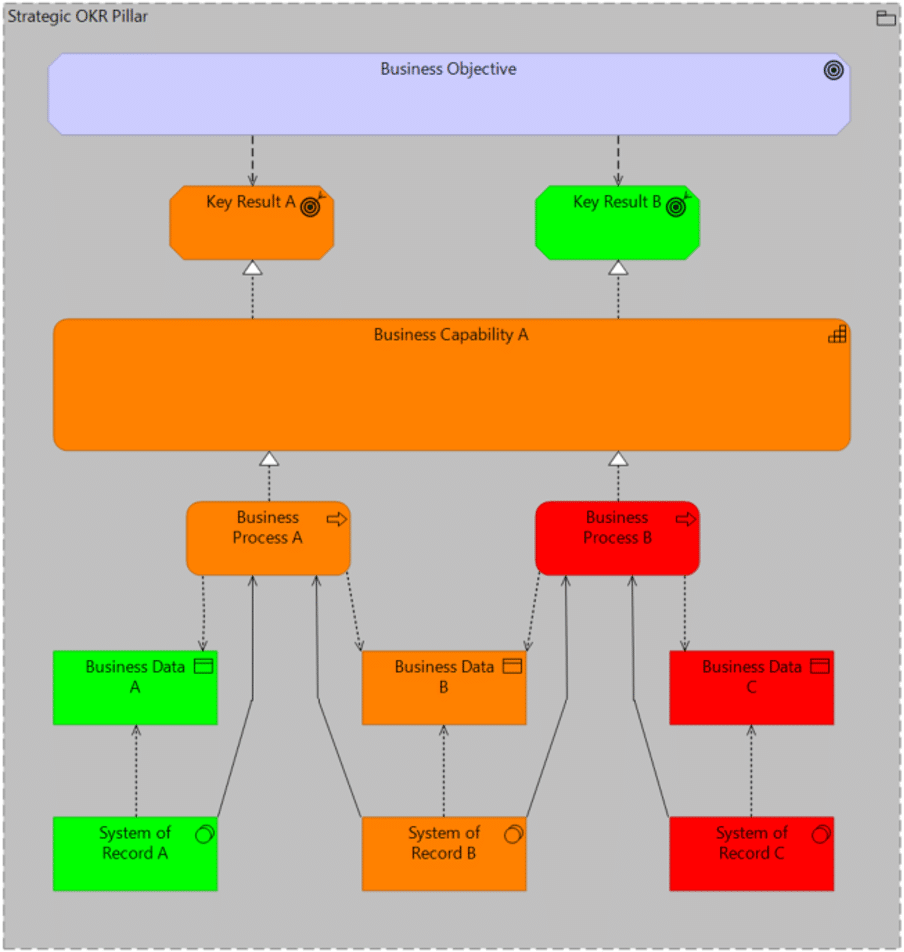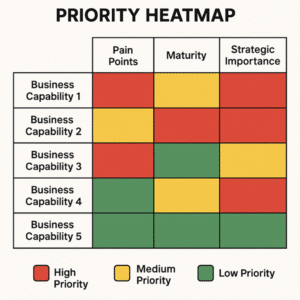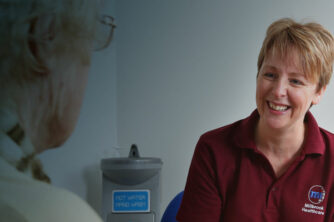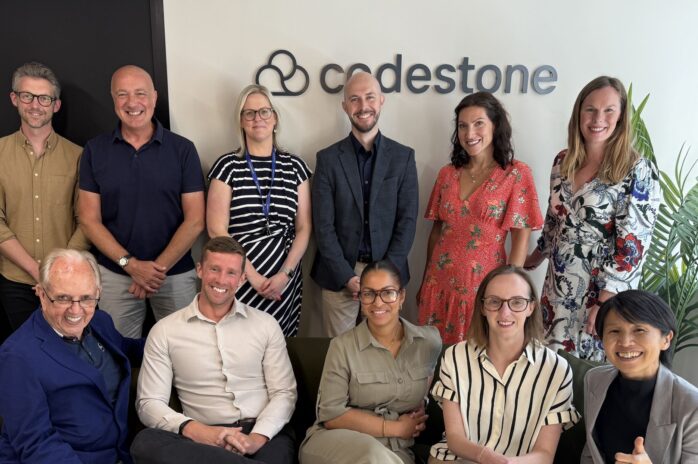Enterprise capability maps are often abstract and underused. I’ve been working on a new, practical, outcome-driven way to use capabilities, one that connects OKRs (Objective and Key Results) to actual systems, data, and business processes. Here’s how I’m doing it.
The Problem
Most capability models feel academic. They’re often created once, then ignored. In my case, the business has defined OKRs, mapped some processes, and run critical transformation work, but we still don’t have one picture showing how we deliver on those outcomes.
My Approach
I started building a capability-led view that connects OKRs to execution using ArchiMate. Here’s how the logic works:

1. Business Objectives influence Key Results
- Business Objectives represent strategic intent.
- Key Results are measurable results.
2. Capabilities realise Key Results
- Capabilities are what the business must be able to do to achieve measurable Key Results.
3. Business Processes realise Capabilities
- Business Processes are the activities that bring Capabilities to life.
4. Systems of Record serve Business Processes
- Systems of Record support or automate the processes.
5. Business Processes access Business Data
- Processes use or manipulate key Business Data.
6. Systems of Record access Business Data
- Systems of Record store, process, or serve Business Data.
From this, I generate a Capability Priority Heat-Map, scored across:
1. Strategic importance
2. Current maturity
3. Pain level (manual work, friction, issues)

Why It’s Different
What makes this approach unique is that it’s not a theoretical layer. It’s driven by OKRs, grounded in real systems and pain points, and built to help transformation teams make decisions.
Early Outcomes
1. I can now trace OKRs to real processes and systems.
2. I can surface duplication, inefficiencies, and pain in one visual.
3. I can build models that are reusable across focus areas.
What’s Next?
1. I’ll be publishing visual models for focus areas.
2. I’ll track impact using a custom success scorecard.
3. I plan to evolve the heat-map to guide roadmap prioritisation.
Final Thoughts
This approach could be effective for businesses or digital platforms aiming to translate architectural concepts into real-world execution. If you’re working on something similar, we’d love to hear from you – feel free to reach out to the Codestone team.








































































